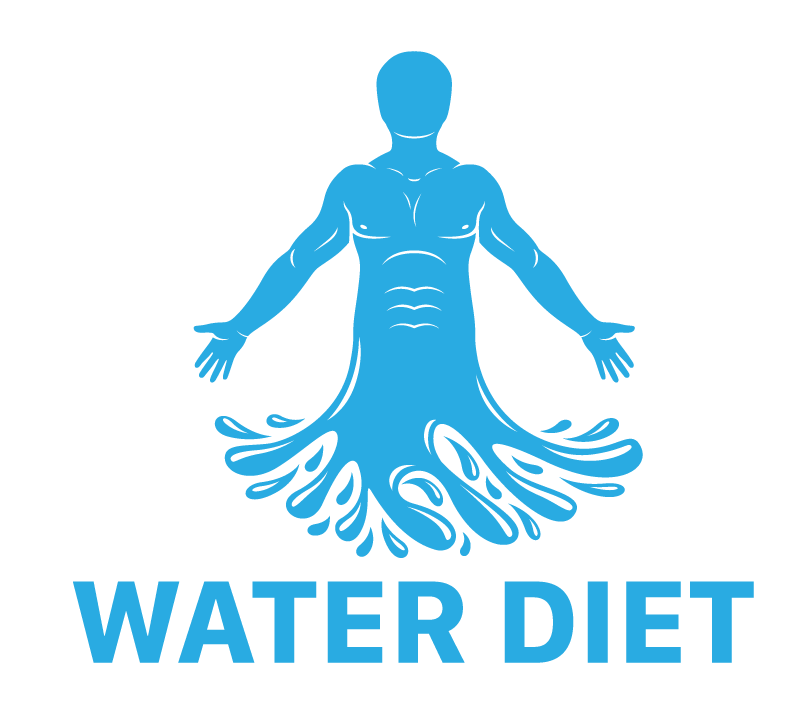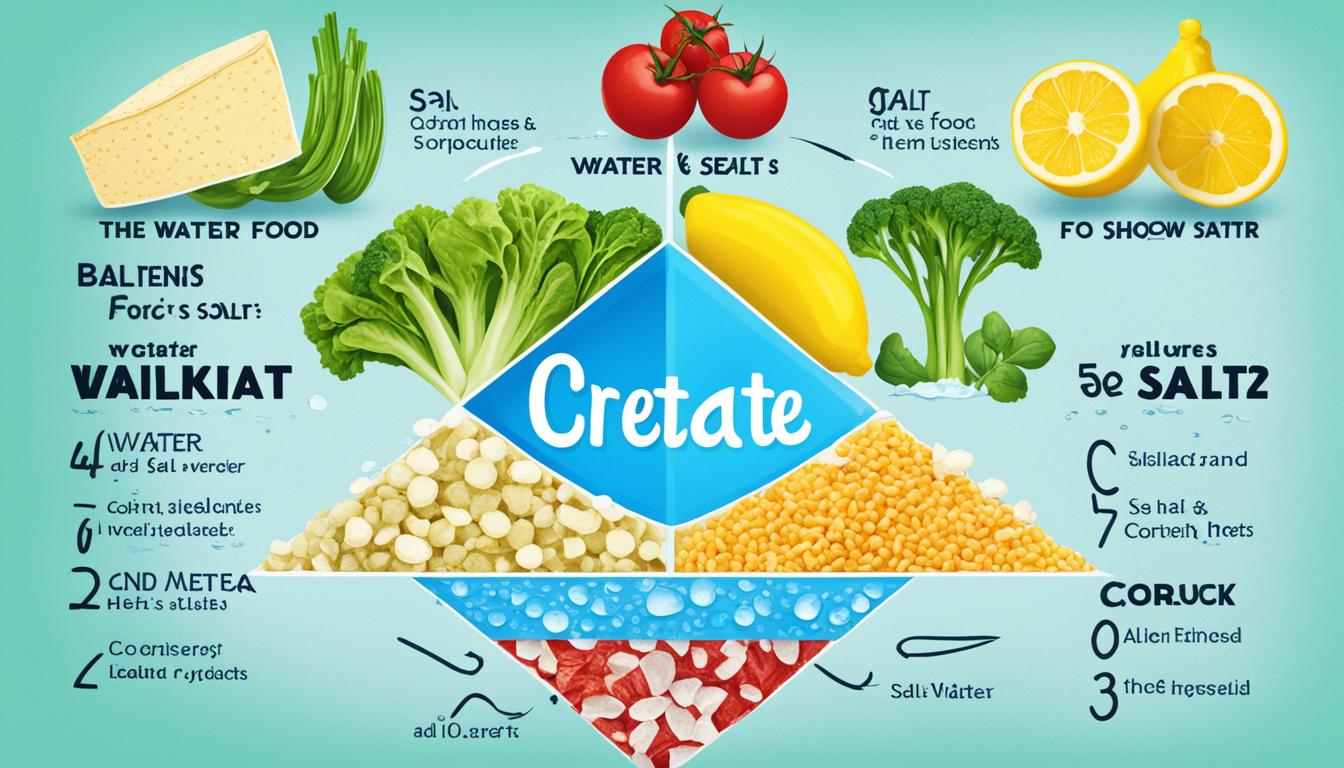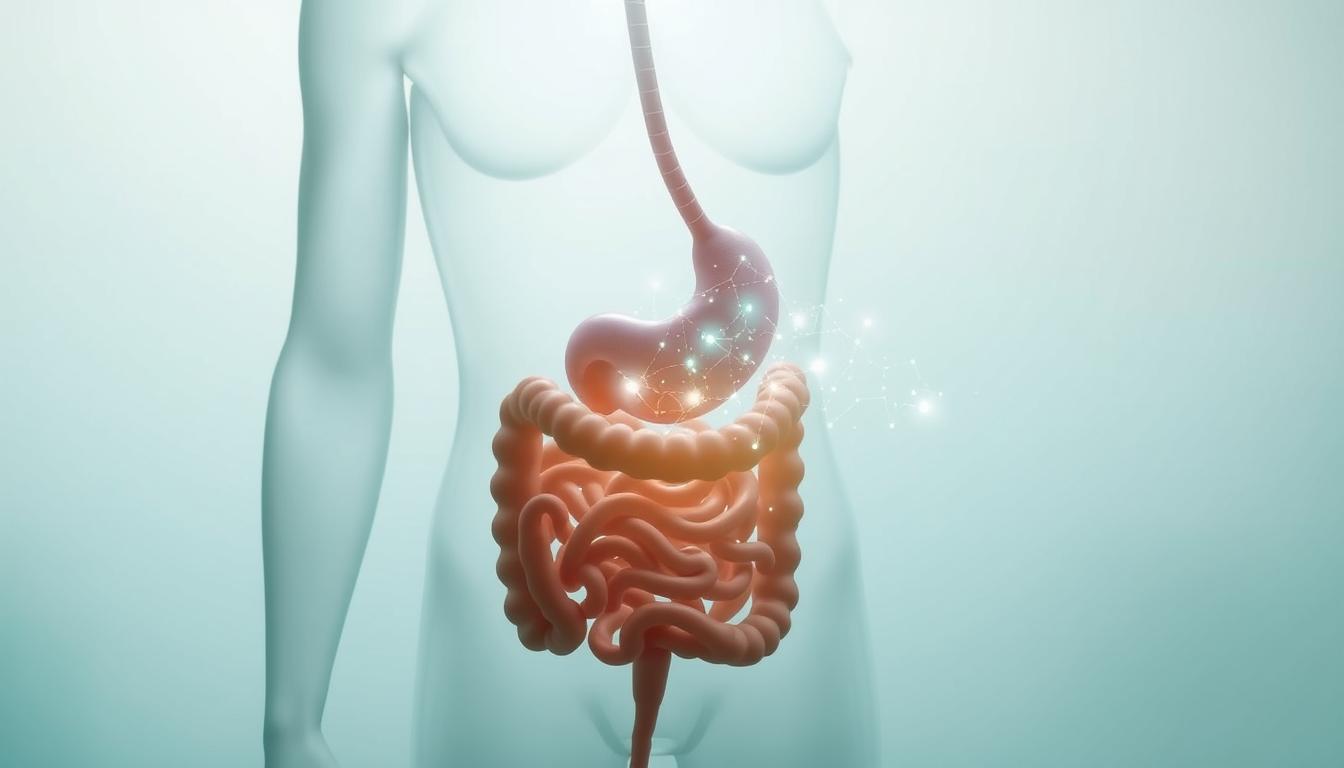Maintaining a balanced diet with water and salt is not just crucial, it’s a cornerstone of sustaining overall health and enabling the body to perform at its peak. The benefits of water and salt in the body diet are numerous, with the duo playing a pivotal role in vital functions such as heart rhythm, fluid equilibrium, and the facilitation of muscle and nerve operations. A daily intake of water and salt is necessary, yet it’s a delicate dance to ensure amounts are neither excessive nor insufficient.
While our bodies cannot do without sodium, the reality is that the average American far surpasses the recommended less than 2,300 milligrams per day, putting themselves at risk for significant health concerns. Fortunately, with the right choices, individuals can strike a harmony between sodium and hydration, leading to a more balanced diet with water and salt and a happier, healthier life.
To meet this balance, incorporating potassium-rich foods can magnify the benefits, working to counteract high sodium levels and contributing to heart health. A conscious effort to manage our water and salt intake plays a vital role in the quality of our diets and our overall well-being.
Key Takeaways
- The interplay of water and salt is vital for a healthy, functioning body.
- A daily intake of water and salt is essential, but moderation is key to avoid health risks.
- Consuming less than 2,300 milligrams of sodium per day is recommended for most people.
- Hydration helps to regulate high sodium levels and maintains body moisture balance.
- Including potassium-rich foods is pivotal to countering excess sodium and enhancing heart health.
- Recognizing the benefits of water and salt leads to improved dietary choices and wellness.
The Role of Sodium in Your Health
Sodium is far more than just a component of table salt—it’s a critical element in the human diet necessary for a host of biological functions. Understanding the importance of hydration and electrolytes, and the effects of dehydration, can illuminate how sodium affects everything from cellular function to muscle contraction. Let’s dive into the impact of sodium on our health and how maintaining its appropriate levels can help us thrive.
Understanding Sodium’s Function
Sodium’s primary role in the body is to maintain fluid balance and support the functioning of nerves and muscles. It works closely with potassium to control the body’s water distribution—vital for the bloodstream, cells, and organs. Without the intricate dance between electrolytes and fluids, our vital systems would not function properly, demonstrating the key importance of hydration and electrolytes in sustaining health.
Recommended Daily Sodium Intake
Though necessary for health, sodium’s intake should be monitored. Health authorities suggest that adults consume no more than 2,300 milligrams per day. Ideally, one should aim for an Adequate Intake (AI) around 1,500 milligrams, this lower threshold supports key bodily functions without stepping into the territory of excessive consumption.
Risks of Excessive Sodium Consumption
When sodium intake eclipses the recommended limits, the risks to health become apparent. High blood pressure, a key target for heart disease and stroke, is often the first alarm, followed by the potential for osteoporosis and kidney issues. Recognizing these risks underscores why proper sodium regulation is integral to health—as is hydration, which helps manage sodium levels and prevent the debilitating effects of dehydration.
| Adequate Intake (AI) | Chronic Disease Risk Reduction (CDRR) Intake |
|---|---|
| 1,500 mg/day | 2,300 mg/day |
| Recommended limits for adults to maintain a healthy sodium balance without increasing chronic disease risk. | |
Importance of Hydration and Electrolytes
The benefits of water and salt are pivotal to our well-being, influencing everything from metabolic processes to muscle function. Understanding the sources of water and salt in our diet is essential for managing our body’s hydration and electrolyte balance. Proper hydration is not merely about quenching thirst; it is fundamentally linked to our body’s ability to regulate itself and perform at its best. Let’s delve into the role that water and electrolytes play in maintaining health and vitality.
Hydration is the cornerstone of effective bodily function, aiding in the excretion of excess sodium, which, if not moderated, can lead to negative health impacts. The act of hydrating does more than replenish fluids; it ensures that electrolytes like sodium and potassium are well-balanced, keeping blood pressure stable and facilitating the numerous physiological transactions that our bodies conduct every second of the day.
With the benefits of water and salt so deeply integrated into our health, it is essential to seek out natural sources of water and salt in our diet. Foods that naturally boast high water content—a juicy peach, a crisp cucumber, or a ripe watermelon—not only refresh and hydrate but also provide the body with essential minerals.
The CDC accentuates the importance of fluid intake for health, emphasizing that individual needs may vary based on numerous factors, including age, activity levels, and environmental conditions. To address these varying needs, the integration of water-rich foods and the consumption of unsweetened beverages, alongside plain water, is advised to meet daily hydration and electrolyte requirements.
- Balancing water and salt intake can enhance kidney function and cardiovascular health.
- Eating a variety of fruits and vegetables ensures a natural and beneficial intake of electrolytes.
- Monitoring sodium levels and choosing natural salts can help offset risks associated with excessive sodium consumption.
Ultimately, a sustained awareness of the benefits of water and salt, as well as the variety of sources of water and salt in our diet, is foundational to crafting a balanced and nourishing dietary lifestyle that supports our health aspirations.
Recognizing the Signs of Imbalance
Maintaining the right daily intake of water and salt is pivotal for optimal bodily functions. It is crucial for individuals to recognize the symptoms that suggest an imbalance, as this can lead to significant health issues. Both dehydration and excess sodium intake have distinctive indicators that should not be overlooked. Awareness and quick action can prevent the long-term consequences of these imbalances.
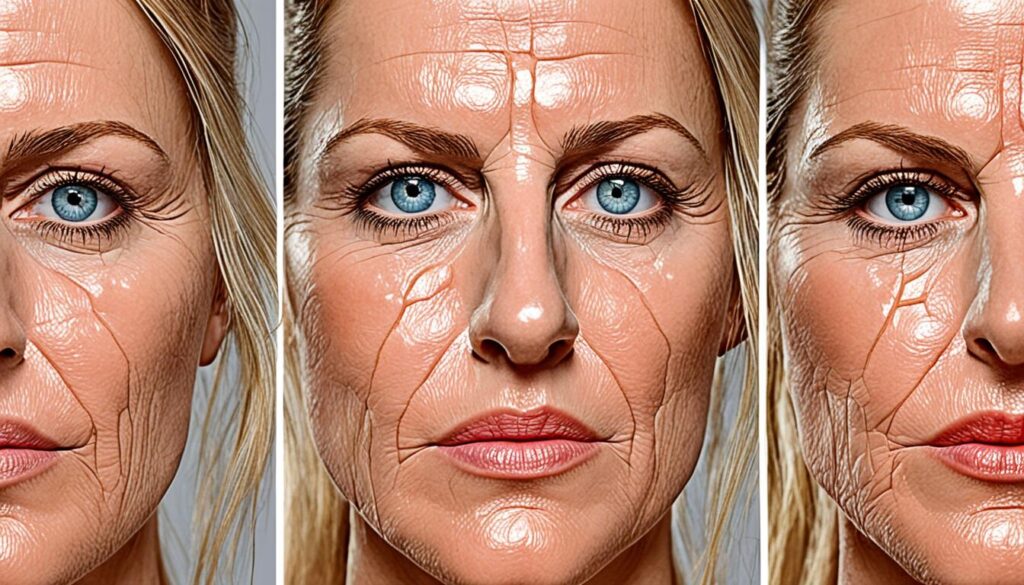
Identifying Dehydration Symptoms
The effects of dehydration can range from mild to severe and impact an individual’s overall wellbeing. Early signs of dehydration include a dry mouth, fatigue, and decreased urine output. As it progresses, symptoms may worsen to include an altered mental state like confusion or irritability, extreme thirst, and reduced elasticity of the skin. In severe cases, lethargy or even fainting can occur. These signs point to a critical need for increased water intake.
Detecting High Sodium Intake
On the flip side, excessive sodium intake is equally hazardous and commonly unnoticed until it manifests as physical discomfort. Telltale signs of consuming too much sodium include bloating, swelling of limbs, and high blood pressure. Intense thirst is another red flag, as the body attempts to dilute the excess salt. Over time, if not addressed, high sodium intake can contribute to more serious conditions like hypernatremia, causing significant strain on the cardiovascular and renal systems.
By paying close attention to the body’s signals and ensuring a balanced daily intake of water and salt, individuals can uphold a harmonious internal environment conducive to health and vitality.
How to Maintain a Balanced Water and Salt in Body Diet
Achieving a balanced diet with water and salt is essential to our well-being, with the importance of hydration and electrolytes standing out as key components in this healthful pursuit. Engaging in mindful consumption habits, we can ensure our bodies are both nourished and functioning optimally. Creating this balance involves several strategic dietary and lifestyle choices.
- Monitor and regulate your sodium intake to adhere to daily recommended levels.
- Prioritize hydration by drinking ample water throughout the day to aid in diluting and eliminating excess sodium.
- Include potassium-rich foods in your diet to counterbalance sodium levels and support heart health.
- Opt for fresh, unprocessed foods, known for their lower sodium content.
- Increase physical activity to promote the excretion of sodium through perspiration.
One of the effective methods for maintaining a balanced diet is to be conscious of the sodium levels in the meals we consume. Processed foods are typically high in sodium, so choosing raw, unprocessed ingredients wherever possible can drastically lower overall sodium consumption. For instance, replacing canned vegetables—often high in added salt—with fresh produce can make a significant difference.
Incorporating potassium-rich foods such as bananas, avocados, and leafy greens into your diet can also play a crucial role. Potassium works to counteract the effects of sodium and helps to maintain a healthy blood pressure level.
Furthermore, adequate hydration cannot be overstated. Drinking water throughout the day facilitates the proper functioning of our kidneys, flushing out excess sodium and toxins from our system. This is where the importance of hydration and electrolytes is most vividly seen, as our bodies rely on this balance for a plethora of functions including nerve signaling and muscle contractions.
| Hydration Habit | Benefits |
|---|---|
| Drinking 8 to 10 glasses of water daily | Helps regulate body temperature and maintain electrolyte balance. |
| Including fruits and vegetables with high water content | Provides hydration along with essential vitamins and minerals. |
| Consuming hydration-boosting foods post-exercise | Aids in quicker recovery and restores balance after sweating out salts. |
Lifestyle adaptations, such as increasing physical activity levels, not only contribute to overall health but also supports the body’s natural ability to maintain an equilibrium of water and salt. Exercise promotes perspiration, naturally encouraging the removal of sodium. The balance of water and salt intake is not an isolated aspect of our health; it’s tightly woven into our daily choices and behaviors. A thoughtful approach to what we eat and drink, complemented by an active lifestyle, forms the core of a balanced diet with water and salt.
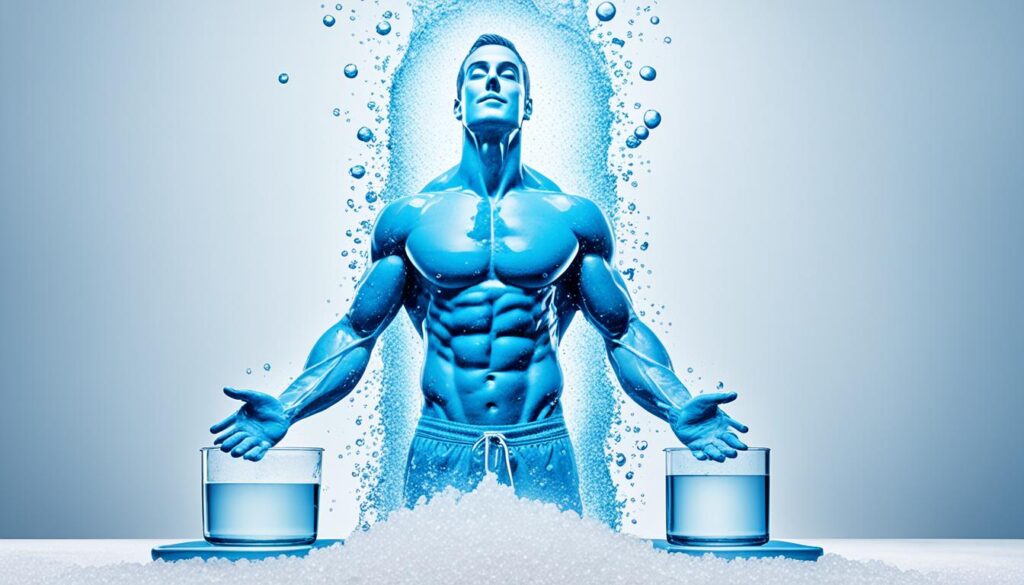
In summary, leading a life with a mindful eye on the scales of hydration and sodium intake can yield profound health benefits. Adjusting daily habits to satisfy the intricate dance between these two dietary staples is a worthwhile endeavor that promises a lifetime of health and vitality.
Natural Sources of Water and Salt in Diet
Discovering the optimal sources of water and salt in diet is vital for maintaining health and well-being. Unprocessed, whole foods naturally offer these essentials without the added risks that come with excessive sodium intake. Let’s explore the advantages of turning to nature for our hydration and electrolyte needs and how to discern the sodium levels in the foods we consume.
Benefits of Whole Foods and Hydration
Whole foods such as fruits, vegetables, whole grains, nuts, meats, and dairy contain intrinsic amounts of water and essential minerals, including sodium and potassium. These foods provide a symphony of nutrients without the excess sodium that is often found in processed products. Understanding how much water and salt the body requires leads nutrition-conscious individuals to prioritize unprocessed foods in their diet, tapping into rich, natural sources that support a healthy electrolyte balance.
The power of hydration extends beyond simply drinking water. Foods with high water content like cucumbers, tomatoes, and watermelons contribute to our daily hydration needs, complementing our fluid intake, while offering the benefits of vitamins, fibers, and minerals.
Knowing Your Food: Hidden Sodium in Packaged Products
While natural foods offer balance, packaged products can conceal high amounts of sodium, posing a challenge for consumers. It’s imperative to become well-acquainted with nutritional labels to ensure that the sources of water and salt in our diet don’t contribute to inadvertently high sodium intake. By recognizing the hidden sodium in packaged foods and choosing lower-sodium alternatives, we can further refine our dietary choices for the better.
| Food Item | Water Content | Sodium Content (mg) |
|---|---|---|
| Cucumber | 96% | 2 |
| Watermelon | 92% | 1 |
| Tomato | 95% | 5 |
| Almonds, dried | 4% | 1 |
| Beef, sirloin steak | 69% | 55 |
Emphasizing the importance of hydration and electrolytes is key to a balanced diet. By recognizing nutritious, natural sources of water and salt, individuals can adopt dietary practices that align with their hydration and health objectives. Through conscious food choices and monitoring the consumption of water and sodium, a well-hydrated and properly nourished body becomes an achievable goal for all.
Strategies for Correcting Dietary Imbalances
Addressing the delicate balance between water and salt intake is a crucial aspect of maintaining a healthy, balanced diet. A lifestyle abundant with the benefits of water and salt can mitigate the effects of dehydration and prevent potential health hazards associated with high sodium consumption. Employing practical approaches to correcting dietary imbalances involves conscientious choices and informed actions.
To foster a balanced diet with water and salt, hydration must be prioritized. It is advised to increase water consumption, which can facilitate the proper functioning of the kidneys in flushing out excess sodium and support bodily systems to counteract dehydration. A concerted effort to drink more water can directly address the discomfort and risks posed by excessive salt intake.
Equally essential to correcting dietary imbalances is minimizing high-sodium food intake. Processed foods often contain outsized quantities of sodium, even in products not traditionally associated with being salty. To maintain a balanced diet, opt for fresh, unprocessed ingredients and be vigilant about reading food labels to choose low-sodium variants when available.
- Choose fresh fruits and vegetables over canned goods
- Opt for whole grains and lean protein sources
- Inspect labels and select products with lower sodium content
To counterbalance the effects of sodium and promote a balanced diet, including potassium-rich foods in one’s dietary regimen is instrumental. Potassium helps negate the impacts of sodium and is pivotal for heart health. Foods such as white beans, avocados, and leafy greens are excellent sources of this key nutrient.
| Food Item | Potassium Content (mg) | % of Daily Value |
|---|---|---|
| White beans (1/2 cup) | 595 | 13% |
| Avocado (1/2 fruit) | 488 | 10% |
| Spinach (1 cup, cooked) | 839 | 18% |
Introducing regular physical activity into one’s routine aids in expelling excess salt from the body through sweat, complementing dietary modifications. As physical activity increases, so too does the body’s ability to regulate sodium levels via natural physiological processes.
Additional practical steps to ensure a balanced diet with water and salt include the use of spices and herbs to enhance the flavor of dishes without the need for extra salt. Preparing meals at home grants greater control over sodium content, allowing individuals to make smarter choices that support a balanced diet.
Implementing these strategies not only aids in correcting current dietary imbalances but also establishes a foundation for a healthier lifestyle. The cumulative effect of consistent dietary choices brings us closer to achieving and maintaining the benefits of water and salt in our diets.
Conclusion
In the pursuit of wellness, understanding how much water and salt we need is paramount. Treading the line between excess and deficiency is delicate yet crucial for maintaining a balanced diet with water and salt. As we’ve explored, the prescribed less than 2,300 milligrams of sodium daily sets the benchmark for a healthy intake, preventing the adverse effects associated with overconsumption. Coupling this with adequate hydration, including fluids from water-rich foods, fosters a synergistic balance, safeguarding against imbalances that could escalate into chronic conditions.
Summarizing Dietary Essentials for Water and Salt Balance
A heart-healthy lifestyle hinges on the importance of hydration and electrolytes. By consistently choosing fresh, whole foods over processed options, our bodies naturally receive the correct proportions of water and salt. Potassium-rich foods enhance this equilibrium, helping to mitigate sodium’s potential blood pressure-elevating effects. Thus, a robust understanding and application of these dietary essentials not only curtail immediate health issues like bloating but also fortify our defenses against long-term risks.
Adopting Healthy Habits for Long-Term Benefits
Adopting a lifestyle centering on a balanced diet with water and salt emerges as the linchpin for long-term health benefits. Small, conscious decisions daily—like reaching for a banana instead of a bag of chips, or hydrating with water rather than a sugary soda—collectively amount to substantial positive impacts on one’s well-being. By prioritizing these habits, we further empower our bodies to maintain this crucial balance autonomously, ensuring a path towards sustained health as we gracefully manage our dietary intake of water and salt.
